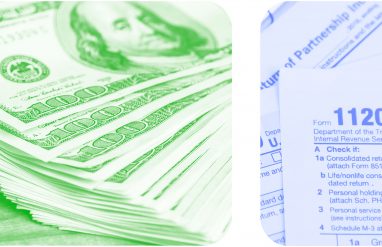Many people around the world agree that doughnuts—those small sweetened or unsweetened pieces of dough fried in deep fat—are delicious. What is less agreed on (at least in the United States) is the spelling: is it doughnut or donut? Technically, it can be both.
Dictionaries and popular style guides like the AP Stylebook list doughnut as the preferred spelling. However, donut is a common variation in the United States. It’s less common in official settings, but is still fully acceptable. You don’t have to look far to see examples of the latter, in part thanks to popular brands like Dunkin’ Donuts that have helped popularize the simplified doughnut spelling.
There’s more to the word doughnut (as well as donut), though.
What makes doughnuts “nuts”?
The word doughnut was first recorded at the end of the 1700s with the spelling donote. It’s just one example of how the English language has changed over time—and an example of how messy spelling has always been when it comes to English. And words with -ough spellings can be especially rough, like through, tough, drought, cough, and others.
Doughnut, of course, is a compound of dough (which became simplified to do- in donut) and nut. But why nut?
There are a couple lines of thinking as to how the nut part of the word came to be. One is that nut, here, is likened to a small lump of dough. The other is related to literal nuts, and traces the sweets back to a woman named Elizabeth Gregory who made deep-fried dough with cinnamon and nutmeg and put hazelnuts or walnuts in the middle. The nuts filled the space where the dough wouldn’t cook all the way through—a solution before the middle was taken out of doughnuts entirely.
A brief history of doughnuts
A doughnut these days can refer to more than just the sweet treat we’re familiar with. It also can mean the shape of a ring with a hole in the middle, or the act of spinning in a circle, as in a car doing doughnuts in a parking lot.
Among the first doughnuts to be enjoyed in the Americas weren’t called doughnuts. They came from Dutch settlers who lived in what was then known as New Amsterdam. The settlers brought what they called olykoeks, which translates to “oily cakes.” From a literal perspective, it made sense: cakes fried in oil.
Elizabeth Gregory, the woman who has been credited with the nuts in doughnuts, also plays a role in how doughnuts got their hole. According to legend, her son, Captain Hansen Gregory, put a hole in the middle of the fried piece of dough. Cutting out the middle meant that the inside would cook evenly alongside the exterior, so the story goes, though there are other stories about how it also allowed Captain Gregory to put his doughnuts on the spokes of a ship’s wheel, and others that say he did it to make the doughnuts easier to digest.
Regardless of how doughnuts got the shape they’re famous for today, they hit a sweet spot. Doughnut machines pumped out commercial versions in New York City as early as 1920, and Americans fighting in the trenches of World War I were given doughnuts to give them a taste of home (soldiers at the time were often called doughboys, but that had to do with the buttons on their uniform rather than doughnuts). The Chicago World’s Fair in 1934 featured doughnuts as a cheap and tasty dish. During World War II, women who worked in the Red Cross delivered doughnuts, which earned them the nickname “Doughnut Dollies.”
Hook, line, and sinker: other fun doughnut names
Doughnuts have enjoyed a sustained popularity in the United States to this day. Americans aren’t the only ones chomping down on doughnuts, however. Doughnuts by other names are eaten around the world. There are oliebollen from the Netherlands that commonly have raisins, the long and fried youtiao from China, puff-puff doughnut balls from countries in West Africa, and BeaverTails in Canada (which are named because they’re wide and flat like a beaver’s tail, not because there’s beaver in it). The list goes on. The joy of dough fried in fat and covered in sugar and other toppings is a near universal experience.
Once you’ve fully enjoyed the doughnuts that you’re likely already familiar with, branch out and dig your teeth into some doughnut-related terms every true fan should know.
- Cruller: A long and twisted doughnut that’s rich and light with an often rigid surface. Also sometimes called a French cruller.
- Danish: A Danish pastry is a piece of dough that’s filled with cream, fruit, nuts, cheese, or custard and is then fried.
- Sinker: An informal word sometimes used for doughnut in the United States that dates back to the 1870s.
- Long John: A rectangular doughnut that’s covered with a top layer of frosting and sometimes filled with jelly or custard.
- Doughnut holes: Circular balls of fried dough that are often covered in powdered sugar.














